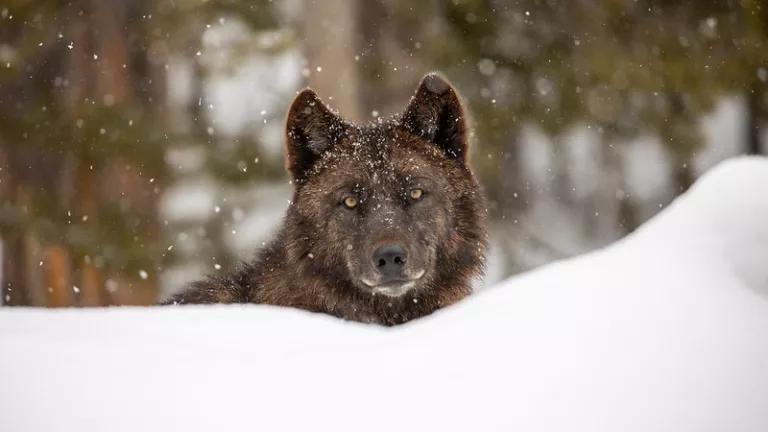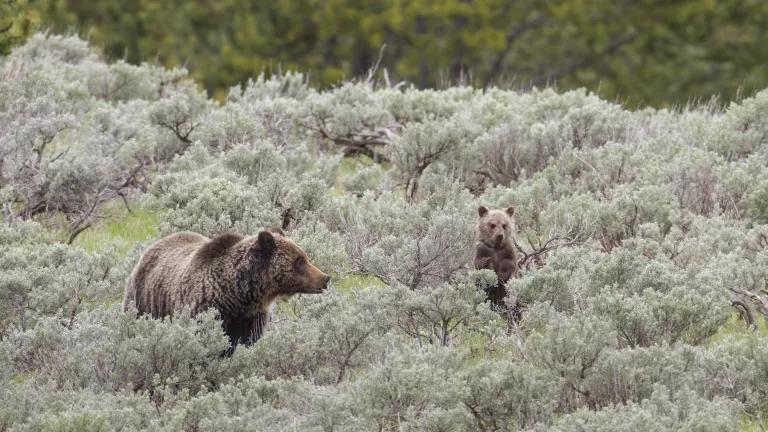Wolves Without the ESA: A Post-Delisting Landscape

Guest blog post written by Madison Dipman
The U.S. Fish and Wildlife Service (FWS) said last year it would remove Endangered Species Act (ESA) protections from gray wolves across most of the lower 48 states (except for Mexican wolves in the Southwest, and wolves in the Northern Rockies, which are already delisted). The agency could finalize its proposal any day. Such a move would represent yet another attempt by FWS to “delist” wolves before they have fully recovered.
Removing federal protections would mean turning management of wolves over to the states. But many states within the wolves’ historical range don’t have any plans in place to manage or recover wolves on their own—or to coordinate with neighboring states when wolves cross state lines. In fact, when we take a closer look at how different states are planning to manage (or not manage) wolves, and at the lack of national or regional planning coordination, we start to see that almost across the board, state oversight would be bad news for wolves.
Western Great Lakes States
There are at least 4,000 wolves spread across Minnesota, Wisconsin, and Michigan, but those states’ management plans only commit to maintaining a population of about half that. This means that up to 40% of wolves in Minnesota and up to 70% of wolves in Wisconsin and Michigan could be killed under state “management.” If ESA protections were removed, these states would likely allow for wolf hunting and trapping seasons and an increase in the number of wolves “removed” in the name of protecting livestock—just as they did in 2011 after wolves in the region were federally delisted (before protections were later restored).
Midwest States
Outside of their core population in the Western Great Lakes, most confirmed sightings of wolves in the Midwest are dispersing wolves (those who leave their packs in search of new territories or mates) in North and South Dakota. These states lack management plans or state protections for wolves, as do most midwestern states except for Illinois. South Dakota even classifies wolves as “varmints” and allows for a resident to kill them at any time on their land. Not only would wolves reaching midwestern states face a greater chance of being shot or trapped, but there would likely be fewer of them, because the Great Lakes population could decrease significantly with state-sanctioned hunting and trapping.
Northeast States
Wolves are protected at the state level in New York (although they could lose this status) and New Hampshire, but no northeastern state has developed an actual management plan to protect or conserve wolves despite abundant suitable habitat and occasional sightings. To have a fighting chance at recovery in the region, wolves in the Northeast need federal protections to remain in place.

West Coast States
Federal protections have already been removed from wolves in the eastern thirds of Oregon and Washington, so the proposed rule would primarily impact the western portions of the states, where there are still few wolves and recovery remains in its earliest phases.
In western Washington, wolves would technically still be protected as a state endangered species, but there would be legal carveouts for livestock owners to kill them to protect their herds. This is already happening in the eastern third of the state.
There is only one known pack and just a handful of places where other wolves have been documented in western Oregon. Despite these low numbers, a shift to state management could still result in more legal opportunities to kill them—particularly in response to livestock depredation—since the species was removed from the state endangered species list in 2015.
Meanwhile, there is currently only one confirmed wolf pack in California, which protects wolves under its state endangered species act. With so few wolves, recovery in California relies on migration from states like Oregon; so, the loss of protections in the Pacific Northwest could inhibit wolf reestablishment further south.
Southern Rockies States
Finally, lone dispersers, most likely from the Northern Rockies, are slowly moving into the Southern Rockies. A wolf pack was seen in Colorado this January for the first time in decades. Wolves in Colorado would retain protections as a state endangered species, but the state plan is currently vague about what types of management “tools” (such as hunting or killing to protect livestock) could be considered if wolves were to lose both state and federal ESA protections. A proposal to develop a plan to recover wolves in Colorado could change that if enacted.
In Utah, wolves would be treated like other predators and trapped and killed if they attack livestock. Utah has been managing wolves to prevent their establishment in the northern corner of the state where wolves are already delisted, so the proposed rule could foreclose recovery in the state altogether.
Unfortunately, based on the scarcity of state-level plans or goals for wolf recovery, it seems that many states would be unable or unwilling to carry out responsible management or advance wolf recovery if wolves are federally delisted. A state-by-state look at the post-delisting landscape makes it clear that the risks of a premature delisting are real, not hypothetical, and that for now, nationwide recovery of gray wolves requires the continuation of Endangered Species Act protections.

Madison Dipman is a rising 2L at UCLA School of Law and was the (virtual) legal intern for the Northern Rockies office this summer. She was the Northern Rockies Winter Wildlife & Energy Intern before starting law school, which reignited her passion for wildlife issues. Although she was not able to spend the summer in Bozeman, she looks forward to returning one day to explore the area (sans snow and icy roads) and to be reunited with Beef, the (vegan) office bulldog.



